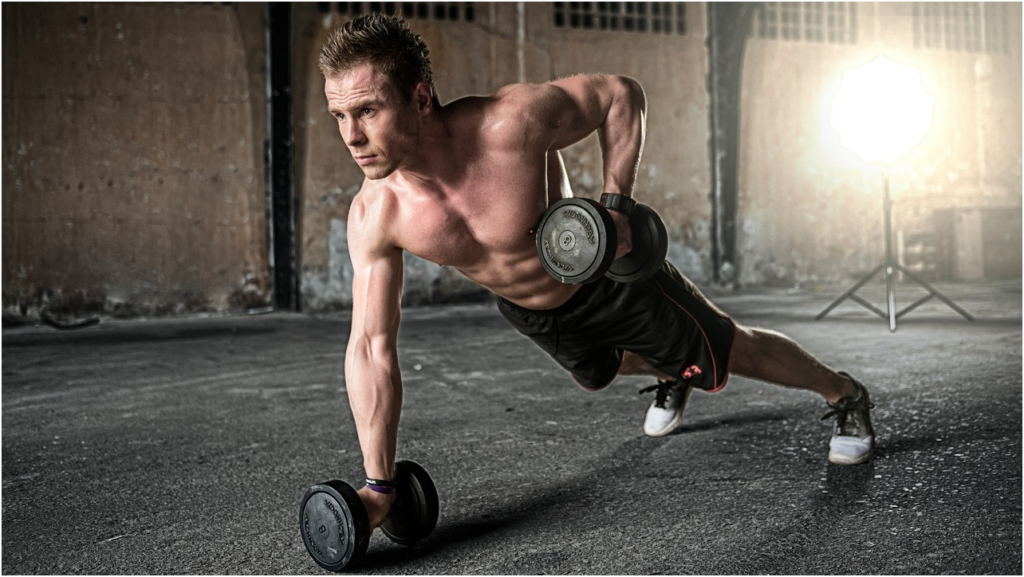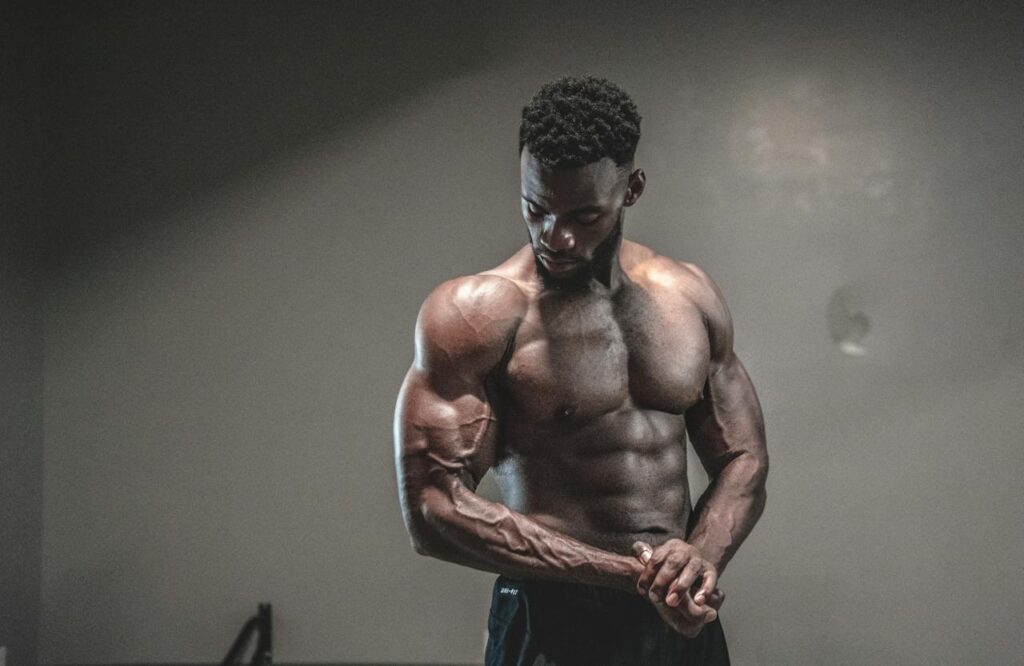As a fitness enthusiast, I understand the importance of having well-developed shoulder muscles. Not only do they contribute to an aesthetically pleasing physique, but they also play a crucial role in maintaining proper posture and stability. The shoulder muscles, also known as the deltoids, consist of three distinct heads: the anterior deltoid, the lateral deltoid, and the posterior deltoid. Each head has its own unique function and can be targeted through specific exercises.
Understanding the Different Muscles Worked During Shoulder Exercises.
Before diving into the workout routine, it is essential to understand the different muscles that are worked during shoulder exercises. The anterior deltoid is responsible for raising the arm to the front, the lateral deltoid assists in raising the arm to the side, and the posterior deltoid aids in extending the arm backward. By targeting all three heads of the deltoids, you can achieve a well-rounded and balanced shoulder development.
Benefits of Strengthening and Sculpting Your Shoulder Muscles.
There are numerous benefits to strengthening and sculpting your shoulder muscles. Firstly, a strong set of shoulders enhances overall upper body strength, allowing you to perform better in other exercises such as bench presses and pull-ups. Secondly, well-developed deltoids give the illusion of a smaller waist and a wider upper body, creating a desirable V-shaped physique. Additionally, strong shoulder muscles promote better posture, reducing the risk of injuries and improving overall stability.

Shoulder Workout Routine for Maximum Results.
Now that we understand the importance and benefits of having strong shoulder muscles, let’s dive into an effective workout routine that will help you achieve maximum results. This routine consists of compound exercises to target all three heads of the deltoids, as well as isolation exercises to focus on specific muscles.
Warm-up.
Before starting any workout routine, it is crucial to warm up your muscles to prevent injuries. Begin with five minutes of light cardio, such as jogging or jumping jacks, to increase blood flow to the muscles. Follow this with dynamic stretches for the shoulders, such as arm circles and shoulder rolls.
Compound Exercises
- Overhead Press: Stand with your feet shoulder-width apart and hold a barbell or dumbbells at shoulder height. Press the weight overhead until your arms are fully extended. Lower the weight back down to shoulder height and repeat for the desired number of repetitions.
- Push Press: Similar to the overhead press, but this time, use a slight dip and drive from your legs to help generate momentum to push the weight overhead. This exercise allows you to lift heavier weights and engage more muscles, leading to greater shoulder muscle development.
- Upright Rows: Hold a barbell or dumbbells in front of your thighs with an overhand grip. Lift the weight by raising your elbows out to the sides until they are parallel to the ground. Lower the weight back down and repeat.
Isolation Exercises.
- Front Raises: Hold a dumbbell in each hand and stand with your feet shoulder-width apart. Raise the dumbbells in front of you until your arms are parallel to the ground. Slowly lower the weights back down and repeat.
- Lateral Raises: Hold a dumbbell in each hand and stand with your feet shoulder-width apart. Raise the dumbbells to the sides until your arms are parallel to the ground. Lower the weights back down and repeat.
Bent-Over Raises: Bend forward at the hips with a slight bend in your knees. Hold a dumbbell in each hand with your palms facing inward. Raise the dumbbells out to the sides until your arms are parallel to the ground. Lower the weights back down and repeat
Proper Form and Technique for Shoulder Exercises.
To get the most out of your shoulder workouts and prevent injuries, it is essential to maintain proper form and technique. Here are some tips to keep in mind:
- Maintain a neutral spine: Keep your back straight and avoid arching or rounding your back during shoulder exercises. Engage your core muscles for stability.
- Avoid excessive weight: Start with lighter weights and gradually increase the load as your strength improves. Using too much weight can compromise your form and increase the risk of injury.
- Control the movement: Focus on performing each exercise with controlled movements. Avoid using momentum or swinging to lift the weights. This ensures that your shoulder muscles are properly engaged throughout the exercise.

Incorporating Shoulder Press Machine into Your Workout Routine.
If you have access to a shoulder press machine, incorporating it into your workout routine can be highly beneficial for targeting your shoulder muscles. The shoulder press machine allows you to isolate the deltoids and lift heavy weights safely. Here’s how you can incorporate it into your routine:
- Seated Shoulder Press: Sit on the shoulder press machine with your back against the pad and your feet flat on the ground. Grasp the handles with a neutral grip and press the weight overhead until your arms are fully extended. Lower the weight back down and repeat.
- Machine Lateral Raises: Adjust the shoulder press machine to its lowest setting. Sit sideways on the machine with your elbow resting on the pad and your arm extended. Lift the weight by raising your arm to the side until it is parallel to the ground. Lower the weight back down and repeat.
Common Mistakes to Avoid During Shoulder Workouts.
To ensure you get the most out of your shoulder workouts and minimize the risk of injury, it’s essential to avoid common mistakes. Here are a few to watch out for:
- Using too much weight: As mentioned earlier, using excessive weight can compromise your form and increase the risk of injury. Focus on using weights that challenge your muscles without sacrificing proper technique.
- Neglecting warm-up: Skipping the warm-up can lead to muscle strains and other injuries. Always dedicate a few minutes to warm up your shoulder muscles before starting any exercises.
- Overtraining: It’s important to give your shoulder muscles enough time to recover between workouts. Overtraining can lead to muscle imbalances, decreased strength gains, and an increased risk of injury. Aim for 2-3 shoulder workouts per week with at least one day of rest in between.
Tips for Preventing Shoulder Injuries During Workouts.
Shoulder injuries can be debilitating and hinder your progress in the gym. To prevent them, follow these tips:
- Listen to your body: Pay attention to any pain or discomfort in your shoulders during workouts. If something doesn’t feel right, stop the exercise and consult a healthcare professional if necessary.
- Maintain a balanced workout routine: Avoid overemphasizing shoulder exercises and neglecting other muscle groups. A balanced workout routine helps prevent muscle imbalances and reduces the risk of injuries.
- Gradually increase intensity: Progressively increase the intensity of your shoulder workouts to allow your muscles to adapt and grow stronger. Avoid sudden jumps in weight or volume, as this can lead to overuse injuries.
Conclusion and Final Thoughts on Achieving Strong and Sculpted Shoulder Muscles.
In conclusion, strengthening and sculpting your shoulder muscles is essential for both aesthetics and overall fitness. By incorporating a well-rounded shoulder workout routine into your fitness regimen, you can achieve maximum results. Remember to focus on proper form and technique, gradually increase the intensity, and listen to your body to prevent injuries. With consistency and dedication, you’ll be well on your way to achieving strong and sculpted shoulder muscles.
So, what are you waiting for? Grab those dumbbells, hit the shoulder press machine, and start working towards the shoulder muscles workout of your dreams.

